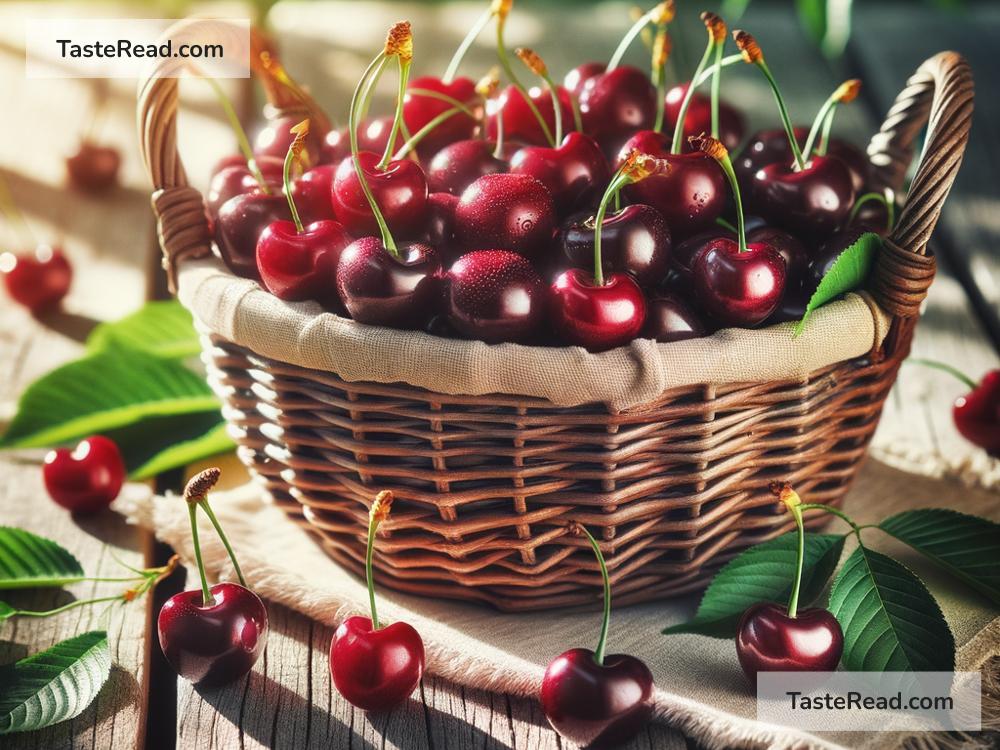Why Fruits Like Cherries Have a Balance of Tart and Sweet Flavors
Have you ever wondered why fruits like cherries taste both sweet and tart at the same time? That refreshing balance of flavors is one of the things that makes cherries and many other fruits so enjoyable to eat. But what creates this unique combination? In simple terms, it all comes down to science, nature, and how fruits grow. Let’s explore why cherries and other fruits strike that perfect balance of sweet and sour.
The Role of Sugar
One reason cherries taste sweet is because of the natural sugars they contain. Fruits produce sugar as they grow and ripen. This is part of their natural development process. The sugar in cherries is mainly glucose and fructose, which are types of carbohydrates that give fruits their sweetness.
The sweetness serves an important purpose in nature. Fruits want to attract animals and insects to eat them and spread their seeds. When animals enjoy the taste of a fruit, they are more likely to carry and drop its seeds in different places, helping the plant grow new trees and plants. Sweetness is nature’s way of making fruits appealing and delicious to potential seed-spreaders.
When cherries ripen, their sugar content increases, making them taste sweeter. This is why a ripe cherry will be much sweeter than one that is still underdeveloped. So, if you’ve ever bitten into a cherry and found it a little sour, it was probably not fully ripe yet!
The Role of Acids
Now let’s talk about the tartness of cherries. The tangy flavor comes from natural acids in the fruit. The main acid found in cherries is malic acid, though there are other acids, such as citric acid, present as well.
Acids in fruits play a big role in their flavor. They provide that zing or sharp taste that makes cherries exciting to eat. Without these acids, cherries would taste overly sweet and might not be as balanced in flavor as they are now.
The tartness in cherries also has a scientific reason. Acidity helps fruits stay fresh and prevents bacteria and other harmful organisms from growing too quickly. It’s like nature’s way of protecting the fruit while it ripens.
Sweet and Tart: A Perfect Partnership
When you bite into a cherry, its sweetness and tartness combine to create a perfect harmony. This is because of the way the sugars and acids balance each other out. If cherries were only sweet, they might taste too sugary. On the other hand, if they were only tart, they might be too sour to enjoy. The balance between these two flavors makes cherries unique and addictive.
The balance of sweet and tart can also depend on the type of cherry. For example, sweet cherries (like Bing cherries) have a higher sugar content, which gives them a stronger sweetness. Sour cherries (like Montmorency cherries) have a higher acidity, which makes them tarter. But even sweet cherries have a hint of tartness, and sour cherries have a touch of sweetness—the perfect mix!
Factors That Influence Flavor
Did you know that the taste of a cherry depends on more than just sugar and acid? Several factors influence how sweet or tart a cherry will be:
-
Ripeness: As cherries ripen, their sugar content increases, and their acidity decreases. This means a fully ripe cherry will taste sweeter than a less ripe one.
-
Variety: Different types of cherries have different levels of sugar and acid. Sweet cherries tend to be fruitier, while sour cherries have a tangy kick.
-
Growing Conditions: The environment where cherries grow can affect their flavor. Soil, sunlight, temperature, and rainfall all play a role in how much sugar and acid the cherries develop.
-
Time of Harvest: Farmers harvest cherries at different times depending on their intended use. For example, cherries meant for sweet snacks might be picked later when they are fully ripe, while sour cherries for pies could be harvested earlier for their tartness.
Why Do We Love Sweet and Tart Flavors?
The reason we love sweet and tart flavors is partly emotional and psychological. Sweetness makes us feel happy and satisfied, as it signals to our brain that we’re eating something nourishing and full of energy. Tartness excites the taste buds and adds complexity to the flavor, making it more interesting.
Together, these flavors create a dynamic experience for our senses. Cherries are a perfect example of how nature caters to our love for balanced flavors. Whether you eat them fresh, bake them into a pie, or blend them into a smoothie, cherries always deliver that delicious combination of sweetness and tartness.
Conclusion
Cherries are truly remarkable fruits, and their balance of sweet and tart flavors is one of the reasons why so many people love them. This unique taste comes from the natural sugars and acids in the fruit, as well as factors like ripeness, variety, and growing conditions. Nature has struck the perfect balance, creating a fruit that is both refreshing and satisfying.
So next time you enjoy a handful of cherries, take a moment to appreciate the harmony of flavors—and the incredible science behind them!


